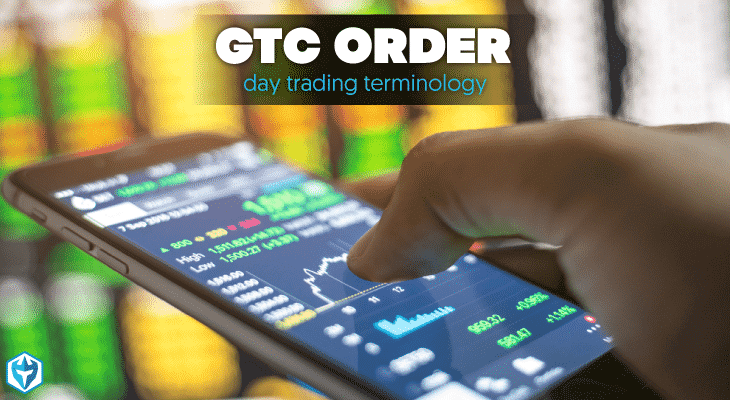What is good for day market order – Trading Tutorial

What Is Good for Day Market Order – Trading Tutorial
The process of trading securities comprises pacing the market orders, as you might already know. But what is good for day market order? There are several types of stock market orders, each of which can have different consequences on the price or time of execution. It’s important to understand the different types of orders before placing any trades.
Here’s what to remember to avoid unpleasant surprises. Before we see what is good for day market order, let’s look at how stocks work and how to get into stocks.
How Do Stocks Work? Bid, Ask, and Spread
The Stock Exchange works like any other market. Investors decide to sell their shares when they anticipate a fall in price and, conversely, decide to buy a share when they expect a price rise. Stock prices vary daily in real-time.
Bid, ask, and spread are the most common terms you will encounter on the stock market. Bid and ask prices are the demand and offer prices, that is, those that determine the price of a security.
You might have spotted an investment that suits you due to your research. Before you start trading, it helps to understand how buying and selling securities like stocks works.
As in all markets, two parties participate in each transaction: the buyer and the seller. The buyer submits a bid price that is the highest price they are willing to pay for a security. The seller offers an ask price, the lowest price they are willing to accept.
Buyers and sellers also indicate the number of shares they want to buy or sell. There is often a long list of buyers and sellers waiting for their orders to perform at different prices.
-
Spread
The spread is the difference between the bid and the ask price. The difference can sometimes be very significant. At other times, the difference may be as little as a penny. In general, the more liquid security is (i.e., it often stock trades at high volumes), the narrower the spread.
-
Day trading
Day trading is all about timing your trades so that you buy an asset when it is trending up, and sell it a few hours later when it is trending down. You never want to hold a position overnight, as this can increase your risk of losses. Meticulous, expert in graphic analysis, the day trader appreciates devoting an entire day to a single trade.
How to Get Into Stocks

To start investing in the stock market, you must open an account in a traditional bank, an online bank, or an online broker’s website. Online banking has the great advantage of being much cheaper than conventional banking. When choosing the trading platforms, make sure to verify their compliance with the regulations in your country.
What Is Good for Day Market Order – Trading Tutorial
In the Internet age, placing a stock market order is disconcertingly easy. But what is good for day market order?
Despite everything, before entering the arena, understanding how to buy and sell orders work remains an essential step to making the right choices and thus avoiding very unpleasant surprises.
Some orders guarantee you the execution market price of the transaction, others the volume of securities trading price, etc. It is essential to identify your objective to place the right good for the day market order.
What Is Good for Day Market Order

-
The limit order: to control the price of the operation
This is the most secure type of order. It allows buying at a maximum price or selling at a minimum price, provided it reaches the price limit. This assumes that it has been set at a realistic price.
This stock market order can split up or not perform on an illiquid market.
-
Market order: to exchange all your securities
This order has priority over other stock market orders. It makes it possible to buy or sell any securities without price conditions, therefore without any price control. This order executes immediately as soon as a buyer or a seller. If you want to buy or sell a security quickly, you can choose this type of order.
However, be careful with volatile values because you do not control the course of execution.
-
The order at the best limit: for a fast transaction
This order is executed at the best offer (if you are buying) or at the best ask (if you are selling). It, therefore, makes it possible to sell or acquire liquid securities quickly.
Please note: you have no guarantee on the price, and your order may be partially executed. If there are securities that have not been executed, they will be transformed into a “limit price” order at the price of the first executed order.
-
Trigger orders: to protect against a trend reversal
Also called “stop” orders, trigger orders can be of two types:
Threshold order: generally used to limit losses. In the case of a sell order, the investor only sells if the market falls below the threshold he has set. As soon as the threshold is reached, it is triggered as a “market” order and therefore takes priority.
Caution: you do not control the course of execution. It is precarious if it concerns illiquid securities or in the event of high volatility.
-
The trigger range order: to control the cost of your operation.
The investor here sets a second limit in addition to the trigger threshold. Upon reaching the threshold, it is triggered as a “limit” order and can therefore be partially executed.
What are Good-Til-Canceled (GTC) Orders?

An order using the Good-til-canceled (GTC) validity period will remain active until the order follows through or becomes canceled.
The ability to place a bid or ask price below or above the current level allows investors to advance their order without having to repeat the process every day.
The GTC order type allows traders to identify the levels at which they wish to enter or exit the market. GTC orders generally face cancellation automatically in the following circumstances:
- If a corporate action results in a stock split (split or reverse stock split), stock exchange, or stock distributions.
- If the company issues a dividend for which the rate exceeds 3% of the previous day’s closing price.
- In case you don’t log in to your IB account for 90 days.
What should be checked before placing a day market order?
A few checks are necessary before placing a stock market order to ensure that it can be executed and under what conditions.
Check the transmission channels accepted to place an order.
Your financial intermediary may have provided specific terms ( by email, via an online platform, etc.) and different pricing. Therefore, it is essential to check the possible transmission channels in your account agreement.
Indeed, suppose you send an email to your interlocutor to place a stock market order while he only accepts orders placed on his online platform. In that case, you cannot turn against him for the non-execution of this order.
Be aware that while placing orders through an electronic channel is often preferred, your financial intermediary generally offers alternative means in the event of a computer malfunction. All information is available in the account agreement.
Check the validity period of your order.
By default, the validity of a stock market order is “day” validity, i.e., only for the current trading day (the session) and before the market closes. But the validity of an order can also be “on a fixed date” (which ends on this date) or “on revocation” (i.e., valid for 365 days).
Be aware that the validity period of your order may have consequences on its probability of execution. The validity periods authorized by your financial intermediary are specified in the account agreement.
Therefore, it is essential to monitor the execution of your stock market order and modify it to adjust it if necessary.
Check the possible execution venues for your stock market order.
Your stock market order can be executed on different markets: for example, a regulated market such as Euronext or a multilateral trading system). These places of execution are not subject to the same regulations. It may have consequences in the event of a dispute. The possible places of execution for your stock market orders are indicated in the order execution policy of your intermediary.
Be aware that your intermediary has a “best execution” obligation for your orders. That implies that he must choose the place of execution that is most favorable to you according to the total cost of the transaction. And if your order executes outside the regulated market, your intermediary must inform you.
We hope we have clarified for you what is good for day market order and that this article will help you make better decisions in the future trades.
The post What is good for day market order – Trading Tutorial appeared first on FinanceBrokerage.
0 Response to "What is good for day market order – Trading Tutorial"
Post a Comment